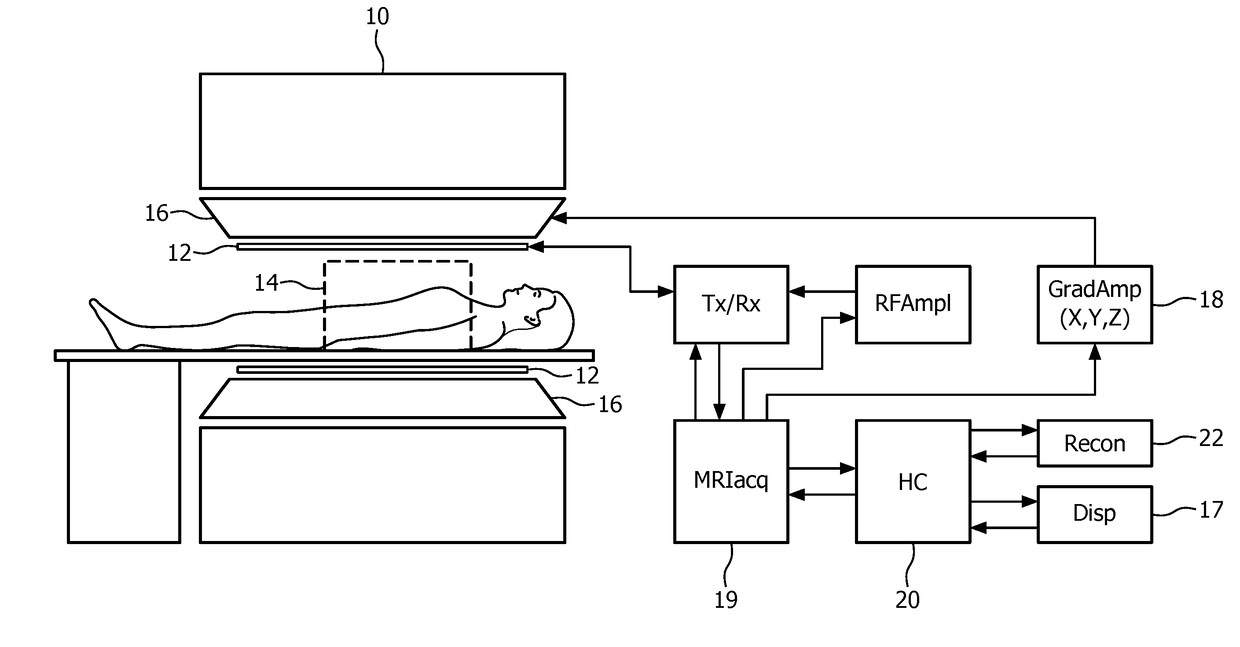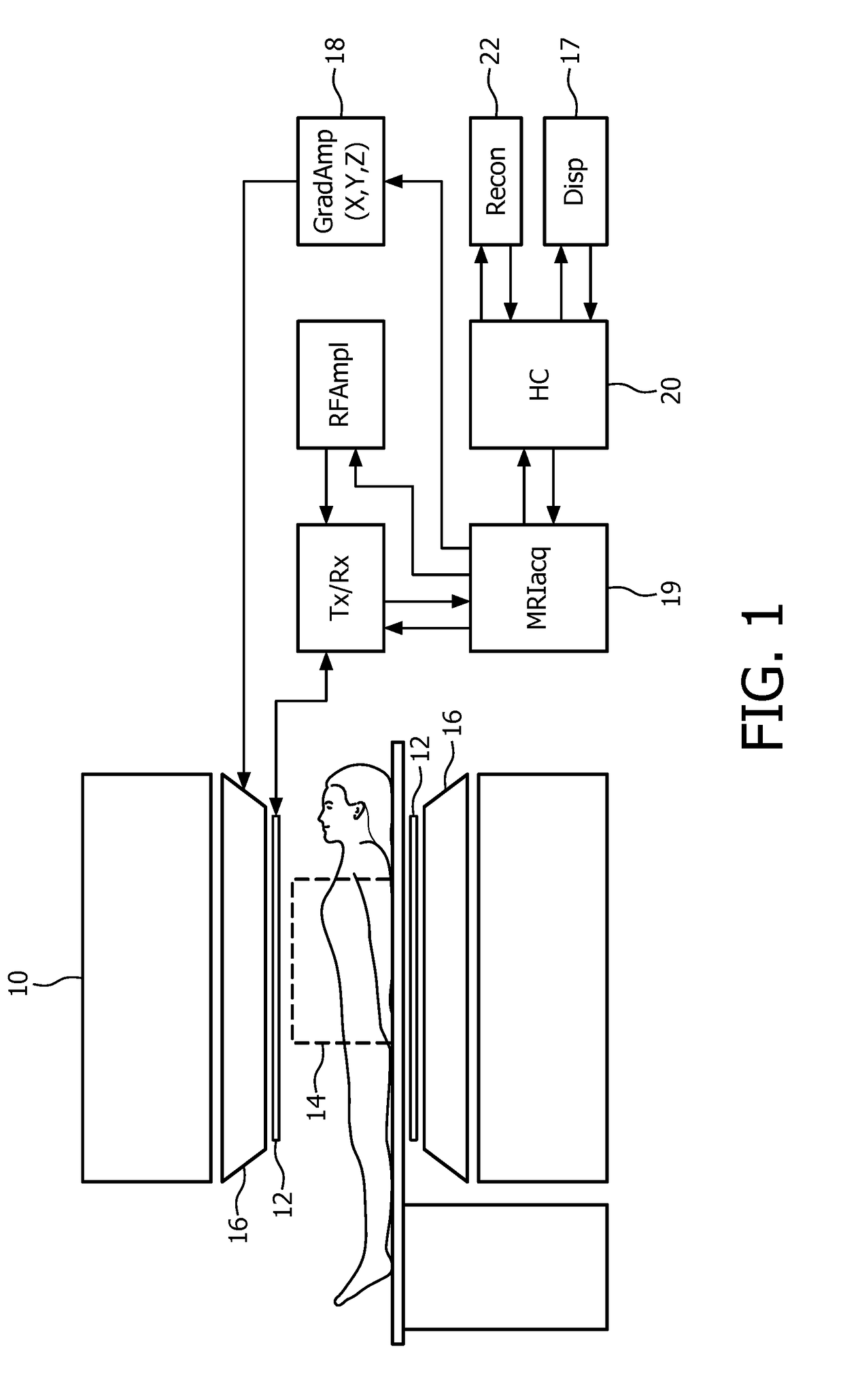Method for determining a patient specific locally varying margin
- Summary
- Abstract
- Description
- Claims
- Application Information
AI Technical Summary
Benefits of technology
Problems solved by technology
Method used
Image
Examples
Embodiment Construction
[0034]FIG. 1 illustrates diagrammatically a medical imaging system, in this case a magnetic resonance imaging (MRI) system in which the invention is used. The MRI system comprises a main magnet 10 which generates a steady homogeneous main magnetic field within the examination zone 14. This main magnetic field causes a partial orientation of the spins in the object to be examined along the field lines of the main magnetic field. An RF system is provided with one or more RF antennae 12 to emit an RF excitation electromagnetic field into the examination zone 14 to excite spins in the body of the object to be examined. The relaxing spins emit magnetic resonance signals in the RF range which are picked up by the RF antennae 12, notably in the form of RF receiving coils. Further, gradient coils 16 are provided to generate temporary magnetic gradient fields, notably read gradient pulses and phase encoding gradients. These gradient fields usually are orientated in mutual orthogonal directio...
PUM
 Login to View More
Login to View More Abstract
Description
Claims
Application Information
 Login to View More
Login to View More - R&D
- Intellectual Property
- Life Sciences
- Materials
- Tech Scout
- Unparalleled Data Quality
- Higher Quality Content
- 60% Fewer Hallucinations
Browse by: Latest US Patents, China's latest patents, Technical Efficacy Thesaurus, Application Domain, Technology Topic, Popular Technical Reports.
© 2025 PatSnap. All rights reserved.Legal|Privacy policy|Modern Slavery Act Transparency Statement|Sitemap|About US| Contact US: help@patsnap.com



